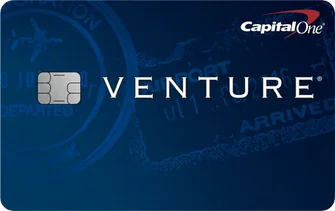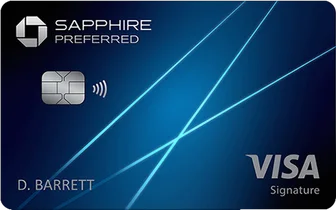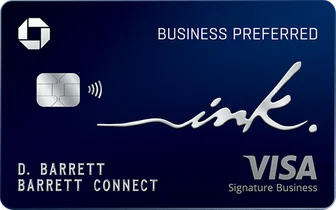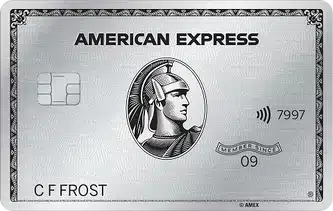This post contains references to products from one or more of our advertisers. We may receive compensation when you click on links to those products. For an explanation of our Advertising Disclosure, visit this page.
The Chase Sapphire Reserve® and Chase Sapphire Preferred® Card are two of the most recommended travel cards. Both Chase cards are extremely popular with consumers because of their perks and the flexibility of Chase Ultimate Rewards® Points, which both cards earn. With the ability to transfer points to Chase’s major travel partners, it’s easy to see why these travel rewards cards are so popular.
And, side note, they are both metal credit cards that are free of foreign transaction fees, making them excellent companions that won’t get easily damaged.
However, Chase has implemented a couple of restrictive rules regarding their cards.
For the best chances of Chase Sapphire Reserve and Chase Sapphire Preferred credit card approval, here are the Chase Sapphire application rules to look out for.

Chase Sapphire Application Rules Contents
- Why should you get the Chase Sapphire Preferred?
- Why should you get the Chase Sapphire Reserve?
- Chase Sapphire Application Rules
- Chase 5/24 Rule
- One Bonus Per Sapphire Family of Credit Cards
- Chase 48-Month Rule
- Other Bank Application and Bonus Rules
- Q: Can You Get the Chase Sapphire Preferred Again?
Why should you get the Chase Sapphire Preferred?
The Chase Sapphire Preferred card is a popular starter card. The Ultimate Rewards points it earns are some of the most coveted in the travel community.
Enjoy Chase Sapphire benefits such as a $50 annual Ultimate Rewards Hotel Credit, 5x points on travel purchased through Chase Ultimate Rewards®, 3x points on dining, and 2x points on all other travel purchases, plus more.
You can book travel at 1.25 cents per point, or they can be cashed out at 1 cent per point. If you prefer to use points for travel, you can transfer to one of the airline and hotel transfer partners. This is a solid card with a $95 annual fee.
Bonus
New Chase Sapphire Preferred® Card cardholders can earn 60,000 bonus points after spending $4,000 on purchases in the first 3 months from account opening. That’s worth $750 when redeemed through Chase Travel℠.
Why should you get the Chase Sapphire Reserve?
The Chase Sapphire Reserve is the big brother to the Sapphire Preferred card. The Reserve comes with a $300 annual travel credit. It earns 5x total points on flights and 10x total points on hotels and car rentals when purchased through Chase Travel℠ (immediately after the first $300 is spent on travel purchases annually). Earn 3x points on other travel and dining & 1 point per $1 spent on all other purchases.
Points are 50% more valuable with the Reserve because they are worth 1.5 cents per point for Chase Travel℠. You can also cash out the points at 1 cent per point or transfer them to the same Chase travel partners as the Preferred.
The Reserve offers many other benefits to justify its $550 annual fee. This essentially reduces the net annual fee to $250. Cardholders also receive a Global Entry or TSA PreCheck fee reimbursement every four years.
Other Benefits
If you reserve rental cars when you travel, you’ll appreciate the Primary Rental Car Insurance. Other benefits include Priority Pass Select lounge membership, trip cancellation & interruption insurance, extended warranty protection, and purchase protection.
You will need an excellent credit score for this card.
New Chase Sapphire Reserve® cardholders can earn 60,000 bonus points after spending $4,000 on purchases in the first 3 months from account opening. That’s $900 toward travel when redeemed through Chase Travel℠.
Related: Does it Make Sense to Go for the Chase Sapphire Reserve over the Sapphire Preferred?
Chase Sapphire Application Rules
A couple of years ago, Chase took a $300 million charge to its corporate earnings due to “credit card superusers” maximizing credit card rewards. When travel credit cards and our behaviors start impacting the bottom line of a bank, bank management will take notice.
Chase has taken a couple of steps to restrict applications for some of its credit cards. Thankfully, these application rules won’t affect most consumers.
Chase 5/24 Rule
A couple of years ago, Chase implemented the “5/24 Rule.” If you have more than five new credit cards on your credit report in the last two years, you will be declined for many of Chase’s most popular credit cards.
This rule is more restrictive than others because it includes any new credit cards you’ve opened from other banks. Unfortunately, if you are added as an authorized user on someone else’s credit cards, that also counts toward your five new cards. Most people don’t realize that Home Equity Lines of Credit (HELOCs) also count for this total.
I was over 5/24, so I couldn’t get the Chase Sapphire Reserve® until more than two years after it was released. Ok, part of the delay had to do with refinancing a couple of rental properties I own. But applying for a lot of credit cards over a short period of time also put me on the Chase 5/24 list. At long last, I finally have my own Sapphire Reserve credit card.
Which Cards are Exempt from Chase 5/24?
The Chase 5/24 policy has become stricter over the years, as data points confirm.
Previously, American Express charge cards without a preset spending limit didn’t penalize you. Going forward, apply for the Sapphire Reserve before The Platinum Card® from American Express or the American Express® Gold Card if you’re nearing the 5/24 threshold.
Credit Score Needed for the Chase Sapphire
Good or excellent credit (670 to 850 credit score) is needed for the Chase Sapphire Preferred.
This card is easier to qualify for than the Chase Sapphire Reserve, which commands excellent credit (740 FICO Score or higher).
The credit score requirements and the 5/24 policy are the two most important factors. Additional conditions apply if you’re an existing or previous Sapphire member.
One Bonus Per Sapphire Family of Credit Cards
With most Chase credit cards, you can receive the bonus even if you have had another version of the card. In 2017, Chase updated its application rules on the Chase Sapphire cards to be more like Citibank. Now, if you’ve received the signup bonus from the Chase Sapphire Preferred in the last two years, you cannot receive the bonus from the Chase Sapphire Reserve® (and vice versa).
Chase 48-Month Rule
Until recently, consumers were eligible to receive another bonus from the Chase Sapphire family of credit cards if they had not received that bonus in the last two years. The clock started ticking when the bonus was earned, not when a cardholder was approved for the credit card.
In September 2018, the Chase Sapphire application rules became even more restrictive. The waiting period was increased to at least 48 months since the Sapphire credit card bonus was received.
Here is the official language from Chase Bank: “This product is available to you if you do not have any Sapphire card and have not received a new cardmember bonus for any Sapphire card in the past 48 months.”
If you’re a previous Sapphire cardmember, you can be eligible for a new Sapphire Reserve or Preferred when:
- You are not currently a primary or authorized user of a Chase Sapphire product
- Haven’t earned a Sapphire signup bonus within the most recent 48 months
Assuming you’re a current Sapphire card member, you must contact Chase to either upgrade or downgrade your account to the alternate product. While you won’t be able to earn a second Sapphire bonus, you get to keep your account open and keep enjoying Sapphire rewards.
Two Cards Every 30 Days
At most, Chase will approve two personal credit cards in a 30-day period or one business credit card within a rolling month.
Maximum Number of Chase Credit Cards
There are no publicized limits about how many Chase credit cards you can have at once, assuming you have a qualifying credit score and are not penalized by the 5/24 guidelines.
Digging deeper, a common rule of thumb is that your total credit limit between every Chase card is equal to half of your household income. For example, your combined credit limit can be up to $50,000 with an annual $100,000 income.
Depending on your current credit limits, you will need to make sure there’s room for adding a Chase Sapphire credit limit. The minimum limit for the Chase Sapphire Preferred is $5,000, and $10,000 for the Sapphire Reserve.
Other Bank Application and Bonus Rules
I won’t go into detail on these rules, but other banks also have rules that restrict the welcome bonuses on their credit cards. Here’s a quick summary:
- American Express – “once per lifetime” rule means that you cannot receive the bonus from the same credit card twice. Some cardholders have reported receiving another bonus after waiting seven years or more between applications. Your mileage may vary.
- Bank of America – “2/3/4” rule restricts cardholders from applying for no more than two BofA credit cards every two months, a total of three cards within a year, and four within two years.
- Capital One – One bonus per card per lifetime, but you can earn multiple bonuses with the same card family, such as two Venture family spending bonuses. Additionally, you can only have two personal cards open at once (co-brand cards can be exempt).
- Citibank – “one bonus every 48 months” rule limits you to only one bonus per credit card product every four years. For example, you must wait 48 months to receive a second bonus for the Citi Premier® Card after earning the first. The restriction currently isn’t linked to other credit cards that earn ThankYou points (although it used to be).
These are all important to consider when reviewing the Chase Sapphire application rules.
What To Do If You Can’t Get Either Card
If you aren’t currently eligible to get either of the Chase Sapphire credit cards, you have some options.
#1) Wait until you become eligible.
If you are having trouble with the Chase Sapphire application rules, there are alternatives. Try to see what you can possibly do to prepare for future applications. If you can wait and build up your credit score, you might have more success.
#2) Try for credit cards from other banks.
As great as Chase’s card lineup is, there are still plenty of other great credit cards out there from other banks. I’d suggest The Platinum Card® from American Express or the Citi Premier® Card.
#3) Focus on business credit cards.
Business credit cards are gaining in popularity. This is because most of them do not report to the credit bureaus as long as your account is in good standing. The inquiry will still show up on your credit report when you try for them, but most business cards do not. Plus, many business cards have great category bonuses for your business spending.
I really like the American Express® Business Gold Card or the CitiBusiness® / AAdvantage® Platinum Select® Mastercard®.
Of course, before trying, make sure you have an eligible business.
Also, be careful because some business credit cards, like Capital One Spark and Discover credit cards, have been known to report to the credit bureaus. This is even when your account is in good standing.
Q: Can You Get the Chase Sapphire Preferred Again?
A: Yes, but it depends.
I have received many emails from readers asking if they could get the Chase Sapphire Preferred® Card again if they’ve already held the card. According to Chase’s website, you can earn the bonus if you currently do not have a Sapphire card and you have not received a new cardmember bonus for any Sapphire card in the past 48 months.
This is good news for consumers who previously held the card and would like to get it again. For example, I had the Sapphire Preferred a few years ago but downgraded to a no-fee card because that best fit my needs at the time. However, it’s been over 24 months since I last received a bonus on the Sapphire Preferred. So, I would be eligible for the card and bonus again. Score.
If you have the Chase Sapphire Preferred and want to upgrade to the Chase Sapphire Reserve (or vice versa), there are some rules to know. In regards to the bonus, Chase’s rules are as follows:
The product is not available to either (i) current cardmembers of any Sapphire credit card, or (ii) previous cardmembers of any Sapphire credit card who received a new cardmember bonus within the last 48 months. If you are an existing Sapphire customer and would like this product, please call the number on the back of your card to see if you are eligible for a product change. You will not receive the new cardmember bonus if you change products.
If you’ve read the blog before, then you know that the Chase Sapphire Preferred is one of the best personal rewards credit cards out there (I think it’s the best).
Related Posts:








Can u close some of the 5 cards opened in past 24mo to qualify for the chase sapphire or do those closed cards still get counted?
Closing cards won’t have an impact. It will depend on when you applied for the credit card. Hope this helps!
Does the on-line approval screen tell you if you are eligible for the bonus? I do not remember seeing it.
I had a Chase Slate and Freedom a few years back and hope it doesn’t impact the bonus.
If you’re approved for the card you’re eligible for the bonus. The Slate and Freedom won’t have an impact on your Sapphire application.
I currently have a Chase Sapphire Preferred card that was opened back in 2016. Can I downgrade that card to a Chase Freedom Unlimited card, and then apply for a Chase Sapphire Reserve and get a sign up bonus for the Reserve? Would I lose the points I currently have? It seems like I should be able to get the sign up bonus since I haven’t gotten one since 2016.
You won’t lose your points if you downgrade to either Freedom card, but you will lose the ability to transfer to airline and hotel partners or receive 1.25 cents in value per point when booking travel.
The current rules state that you will not be approved for the CSR or CSP if you’ve received a Sapphire signup bonus in the last 48 months. Check your records to see when the bonus hit your account. If you applied in 2016, it seems that you are really close to being eligible again.
Keep in mind that you won’t be approved for the CSR if you hold the CSP, so you will either need to close that account or downgrade it to one of the Freedoms.
I have a sapphire reserve that I opened I believe over 2 years ago, and I HAD a sapphire preferred that I believe I closed over 2 years ago. Can I open a preferred card now and get the 60k points?
No. The current rules for the CSR and CSP state that you will not be approved for those cards if you’ve received the bonus within the last 48 months. If you click on the “Offer Details” link on the application page for either product, you will find these terms in bold in one of the first paragraphs.
If I apply for a CSR and I am not eligible, will I be able to apply for the Preferred?
It depends on why you weren’t eligible. Did they give you a reason? Most likely applying for the Sapphire Prefered would be the same results though.
Pretty sure that your info is wrong. If you already have one Sapphire card open, you cannot open another one. Might want to doublecheck that.
We have had a Chase Sapphire Preferred card for at least 9 years. We are tired of paying the $95 annual fee, which Chase will not waive (I tried talking to several reps and supervisors about waiving the fee but got nowhere). We have recently used up all of our Ultimate Rewards points on travel and are thinking about downgrading to the no fee Chase Freedom, which is currently offering 3% Ultimate rewards on up to $20,000 ($600) the first year. I have two questions: first, if we reapplied for the Chase Sapphire Preferred in a year or so, would we be eligible for the signup bonus; and second, would the Ultimate Rewards points we accumulate with the Freedom card be eligible for the extra 25% value if we switched back to the Sapphire Preferred?
Yes, once you have a CSP, CSR, or Ink P you can then combine your Freedom points with those accounts. Yes, you would be able to get the CSP again in the future as long as you met the criteria, 5/24 rule, etc.
Chase is telling me I need to cancel my Reserve before applying for the Preferred but with no guarantee I will be approved. (I have a very high credit score….) Is there any other way to do this, to ensure I dont end up without a Chase credit card and to not hurt my credit score by closing the account?
As long as it’s not your oldest credit card canceling a credit card shouldn’t have a major negative impact on your credit score, as long as your credit utilization isn’t significantly changed.
If I am an authorized user CSP, would the 48 month rule still apply to me if I were to apply for the CSR?
Good question. You should remove yourself as an authorized user on the CSP before applying for the CSR.
Hi, I have had the CSR card since Jan. 2017. If I wait out the 4 years, could I cancel and immediately apply for the CSR card again for the sign up bonus? What is the waiting period to sign up for the bonus after closing the card?
Yes, you should be good to go as long as you meet all the criteria.
I currntly have a chase preferred for about 3 yrs and want to get the reserve. Can I close the preferred and not lose the points and apply for a reserve?
Hi Clarissa, you would need to transfer your points out to a travel partner or combine to them another UR earning account to keep your points.
I just downgraded my CSP to the Freedom, but when I applied for the Reserve, Chase said I still had a Sapphire card and auto-rejected(no Hard check on the credit)…How long do I need to wait before applying for the CSR???
There have been conflicting reports, but you should at least wait a week. Hope this helps!
Thanks for the great article and helpful advice! Do you know if the personal and business cards are linked? Aka, does the 5/24 or 48 month rule hold true for applying for the ink card? Thanks for your help and keep it coming!
Thanks for reading the blog! Yes, the Ink approvals are subjected to the 5/24 rule, but they won’t count towards the 5/24 because their activity will not be on your personal credit score.
On the $300 travel credit for CSR, do you know how long it takes to get that back? Customer support didn’t know the answer. End of the year, 6 billing cycles, etc?
The Sapphire Reserve statement credit should automatically post to your Reserve account on the day the purchase posts, but it could take a billing cycle for it to appear on a billing statement.
I opened the Chase Sapphire Preferred card in March, not knowing about the rule with opening a new Reserve card. I was rejected from getting a Reserve card because of the rule. I do not care about getting the bonus points, I just want to get the Reserve as I will be travelling for work and want the increased travel bonuses. Is there any solution? If I cancel my Preferred card (I also have a Freedom card), will my Reserve application be approved? If I wait until 12 months since I opened, will I be able to upgrade (and not receive the points but get the card)?
My husband and I have CSR. We’re both 1/24. We’re not authorized users on each accounts. I wanted to product change or downgrade my CSR to CFU or CF, so it doesn’t have the annual fee. Is this the best move? Should I transfer my UR Points to him before I do this?
Yes, I would transfer your points over to his CSR before you cancel/downgrade. Just to be safe.
I have a CSP and my husband is an authorized user. We’d both like to get separate CSRs. Should we remove him as an authorized user before I request to upgrade?
Being an authorized user won’t hinder him from getting his own card, but you can remove him just to be safe.
Thanks for such a thorough article! I have a super detailed question on timing… I got my first sapphire card in December 2015, but the new cardmember bonus points were awarded on the 2/5/2016 statement date. I have a trip coming up in the spring that I’d love these points for… when is the soonest I can apply? 2/6/20? Or since the clock started ticking from the February statement, would it be better to wait until March?
You should be good to go in March just to be safe since it’s been 48 months from the time you received the bonus. Thanks for tuning in to the blog!
I opened the chase sapphire preferred 12/17/2017 before I knew about sign up bonuses and points and whatnot. I actually opened up the account just because I had 70,000 ultimate rewards points saved up that I wanted to use. I figured I would get the card to make my points worth 87,500 with this card and redeemed them for a couple flights. So I figured there was no point in keeping it open. Not to mention since I used up all my points it’s not like it would help me stretch the rest of my points 25% more. My question is since I DID NOT get the sign up bonus on this card if I were to apply for it again would I be eligible for the sign up bonus? Please advise,
It might be best to reach out to Chase directly in your account online, since you have an unusual situation where you applied for the card but didn’t receive the bonus.
My husband is authorized user on my CSP, as others have mentioned, and he would like to get his own CSR soon. I will remove him from my CSP before he does that, but would he still be eligible for the CSR bonus stuff if I have received the bonus from CSP?
Yes, as long as he meets all the other eligibility rules. Being an authorized user won’t disqualify you for getting your own Sapphire Preferred.
I received the bonus for the CSP in early 2017. I want to upgrade to the CSR as soon as possible but I know that I need to wait at least 48 months in order to get the signup bonus.
Typically, I would downgrade to CF or CFU and apply for the CSR but I know that I wouldn’t get the sign up bonus at this time.
Question is: can I upgrade to CSR for now, then downgrade to CF in one year and re-apply for the CSR to get the bonus?
Hey Tyler, thanks for reading the blog! I don’t believe you would eligible for the CSR bonus in that last scenario.
Do you know if you are able to get a second sign up bonus with a Chase Ink Preferred card?
As long as it’s for another business, you meet the 5/24 rule, and other credit requirements you should be eligible for approval.
I just opened a Chase sapphire last may 28 2020, am i eligible to apply on world of hyatt if i apply today or how long should i wait? TIA
If that is your only application in that time span, and your credit score is in good condition you should be a prime candidate. There’s no way to 100% guarantee an approval though.
If I am a current CSP holder and had my current CSP for more than 3 years (received bonus more than 48 months ago) and want to take advantage of the new 60,000 bonus. If I down grade the current CSP to one of the freedom cards how long do I need to wait before applying for CSP again to be qualify for bonus? Most of the article talk about applying for CSR when you had CSP or vice versa, not sure if I can downgrade CSP and reapply for CSP.
I currently have a CSR. So if i want to get another sign on bonus i have to:
1)Wait 48 months from date points were granted
2) Downgrade to a freedom card.
3)Wait a couple weeks or so, reapply for another CSR.
To get the bonus you should spend $4,000 on purchases in the first 3 months. What kind of purchases are counted? Do they count grocery, dining out, buying product and etc.
Yes, those are all eligible purchases.
I have had (and still have and use) the Sapphire Reserve for many years (received bonus on it more than 2 years ago). Will I be eligible to apply for and receive bonus for a Sapphire Preferred card?
If i have a sapphire reserve card, can my wife (who is not on my account) sign up for the Sapphire Preferred and receive the bonus? If yes, can we then transfer the points to my account (since there is a higher redemption value)?
Yes, she can receive her own Sapphire and you would be able to transfer points between the accounts since you’re in the same household.
Hi Johnny, I got my CSR bonus on 11/15/2016 and have since cancelled the card. I’m currently 4/24. Would I be able to get the 80k bonus if I applied on the 11/7? Will Chase approve me and NOT give me the bonus after all the spending requirement is met?
There’s no way to guarantee approval w/out knowing all your details credit score, etc. I believe you meet the criteria, but you can secure message Chase online in your account to be safe.
Hi Johnny! I am wondering what you might be able to advise in my situation. I got the CSP in March 2017 and received the bonus in June 2017. Due to increased travel, I upgraded the card (product change) to the CSR in September 2019, right before the pandemic. Am I right that after June 2021 I will be eligible for the bonus again, since 48 months will have passed? Should I be concerned that if I downgrade my CSR to the Freedom Unlimited soon, and then re-apply for CSP or CSR in June 2021 that I wouldn’t be approved? My credit is excellent and I am at 1/24 at the moment. Thank you for any insight you can share!
Hi Julian, downgrading your CSR to the Freedom shouldn’t impact your eligibility as long as you meet all other application guidelines. Hope this helps!
Hi Johnny – great article! I recently downgraded my CSR to a CFU. I opened the CSR card back in 2016 and received the reward bonus around early Q2 2016. I assume now that over 48 months have passed, I could capitalize on the latest signup bonus for CSR. However, in reading all of these posts, when I downgraded, I didn’t take into account the rewards points I have currently would no longer be available to transfer to partners or worth the 1.25 per on the portal.
My question is, assuming I apply and are approved for the CSR again, would all my existing points then be eligible to be transferred to partners again and worth 1.25 per on their portal? Or would only new points earned on the new CSR be eligible?
Thank in advance for any help you can provide!
Yes, you would just need to combine your Freedom points with your Sapphire Reserve points!
Hello! So, I have a CSR and CF (old school CF) and cannot get the CSP b/c of current rules. If my wife opens a CSP in her name to get the current offering can she also add me as an authorized user to her CSP? Or is that against the rules of an CSR holder not allowed to have both cards? Also, if she gets the CSP and the 100k pts can she transfer that to my account if she holds the CSP as the primary? Thanks.
Yes, you can transfer Chase UR points behind household accounts, and you can still apply for the CSP if you’re an authorized user on your wife’s card.
I closed my Reserve card yesterday and tried to open a Preferred card today for the 100K bonus but my application was denied and I have no idea why. I have excellent credit, only 1-2 Chase cards in 24 months. Last Sapphire bonus was in 2016. Any ideas?
You can try calling or messaging Chase for the exact reason. There may not have been enough time that passed since you closed your Sapphire Reserve.